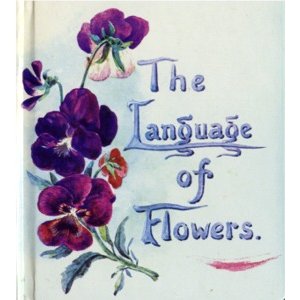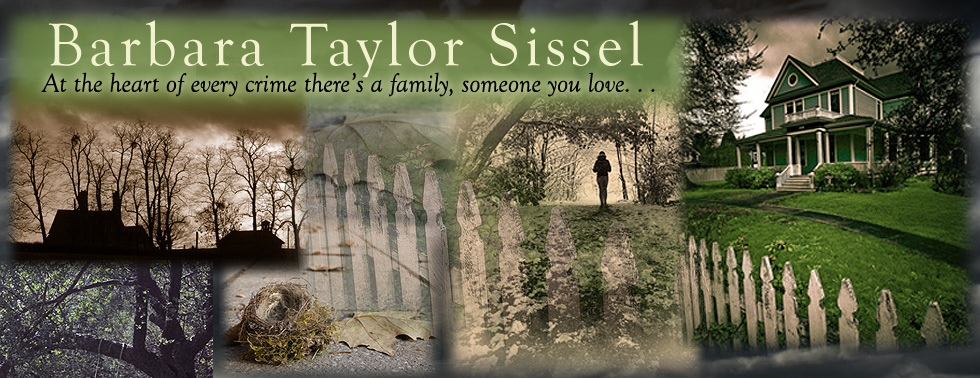 Sometimes called floriography, the language of flowers was a Victorian-era means of communication in which various flowers and floral arrangements were used to send coded messages often in the form of a small bouquet of blooms called a tussie-mussie. Being a lover of gardens as well as a lover of language, I found the idea of conveying meaning through flowers intriguing. At some point a while back my sister gifted me with a small book titled The Language of Flowers. Written in 1913, it was the golden anniversary gift of one husband to his wife. It lay about for years afterward and was finally unearthed from a drawer and reproduced in England with the family’s permission and it is an absolute treasure. The pages are sepia tinted just as the original book’s pages must be by now, and the names of the flowers are hand-scripted in ink the color of well-steeped tea in one column with the meanings painstakingly inscribed on the facing page. Many of the pages are awash in the delicate renderings of water-colored blooms and plants. What a lot of work this husband did to convey his love to his wife. And all we know of him are his initials and his affection. “To Mother,” he inscribed. “Wishing you many happy returns of the day - from Father,” and then he has written the date, August 8th, 1913. And beneath that he wrote:
Sometimes called floriography, the language of flowers was a Victorian-era means of communication in which various flowers and floral arrangements were used to send coded messages often in the form of a small bouquet of blooms called a tussie-mussie. Being a lover of gardens as well as a lover of language, I found the idea of conveying meaning through flowers intriguing. At some point a while back my sister gifted me with a small book titled The Language of Flowers. Written in 1913, it was the golden anniversary gift of one husband to his wife. It lay about for years afterward and was finally unearthed from a drawer and reproduced in England with the family’s permission and it is an absolute treasure. The pages are sepia tinted just as the original book’s pages must be by now, and the names of the flowers are hand-scripted in ink the color of well-steeped tea in one column with the meanings painstakingly inscribed on the facing page. Many of the pages are awash in the delicate renderings of water-colored blooms and plants. What a lot of work this husband did to convey his love to his wife. And all we know of him are his initials and his affection. “To Mother,” he inscribed. “Wishing you many happy returns of the day - from Father,” and then he has written the date, August 8th, 1913. And beneath that he wrote:There is a language, “little known”,
Lovers claim it as their own.
Its symbols smile upon the land,
Wrought by nature’s wondrous hand;
And in their silent beauty speak,
Of life and joy, to those who seek
For love divine and sunny hours
In the language of the flowers.
His initials follow, F.W.L.
Who wouldn’t treasure such a gift? But lest you think the language of flowers is all about love and romance, look up the meaning of foxglove, one of my favorite flowers. When I first was working on The Ninth Step and realized Livie was fluent in the language of flowers, that she was receiving mysterious gifts of flowers, I wanted her to have a bouquet of foxgloves. Their tall stems are regal and elegantly lined with flowers shaped like small bells or fairy hats or one leg of the tiniest ruffle-edged pair of pantaloons. Their throats are speckled as daintily as a bird’s egg and their colors are a sweet range of the softest pastel shades. I was certain their meaning would be something wonderful, something suited to my purpose and Livie’s. But no. A gift of foxgloves is meant to convey insincerity. At least according to Mr. F.W.L. So Livie never got a single one. I thought of narcissus, too, but their meaning is egotism. And it’s funny because the close cousin to narcissus, a gift of daffodils, translates to regard. Doing a quick Google search, I could only find the book, authored by Margaret Pickston, on Amazon.com for a rather steep price--around what it costs to purchase a beautifully-done bouquet of roses, say--if it is purchased new. But a used copy can be had for one cent and the book is well-worth many times that. I truly treasure mine for all the many hours of pleasure it has given me, never mind what it provided in the way of research for my story. I have to thank Livie for the idea though. She’s the one who told me she knew the language, who helped me learn it too.








What a beautiful post! Thanks so much for sharing this treasure!
ReplyDeleteWhat a fascinating and beautifully written post! I loved it and look forward to reading more!
ReplyDeleteThank you for coming, Iza. I'm so glad you liked this. The little book is really beautifully done.
ReplyDeletehello, I was researching your book The Language of Flowers and wondered if the copy I have is the oroginal ,It is very old and has all the hall marks of being so with no information who wrote it apart from the dedication in the front it has the usuallty age spots of an old book and is fascinating that there is no name of publisher kind regards margie
ReplyDeleteMargie,
ReplyDeleteIf it is the same as the one shown on my blog, I know very little about it other than it was published some time in the 1960's. Somewhere, I read that the original was a creation done by a man for his wife on the occasion of their anniversary. It was found later by the family after the man and/or his wife died. At that point or some time later, someone, perhaps a member of the family had it published. I don't know any of those details. My copy was a gift from my sister, a way to share our mutual love of flowers and language. I wish I could be of more help. It is a lovely little book.
Thank you for your reply I was just so curious that there are no names of publisher or dates but such a delightful little book enhanced by your lovley web page
ReplyDelete